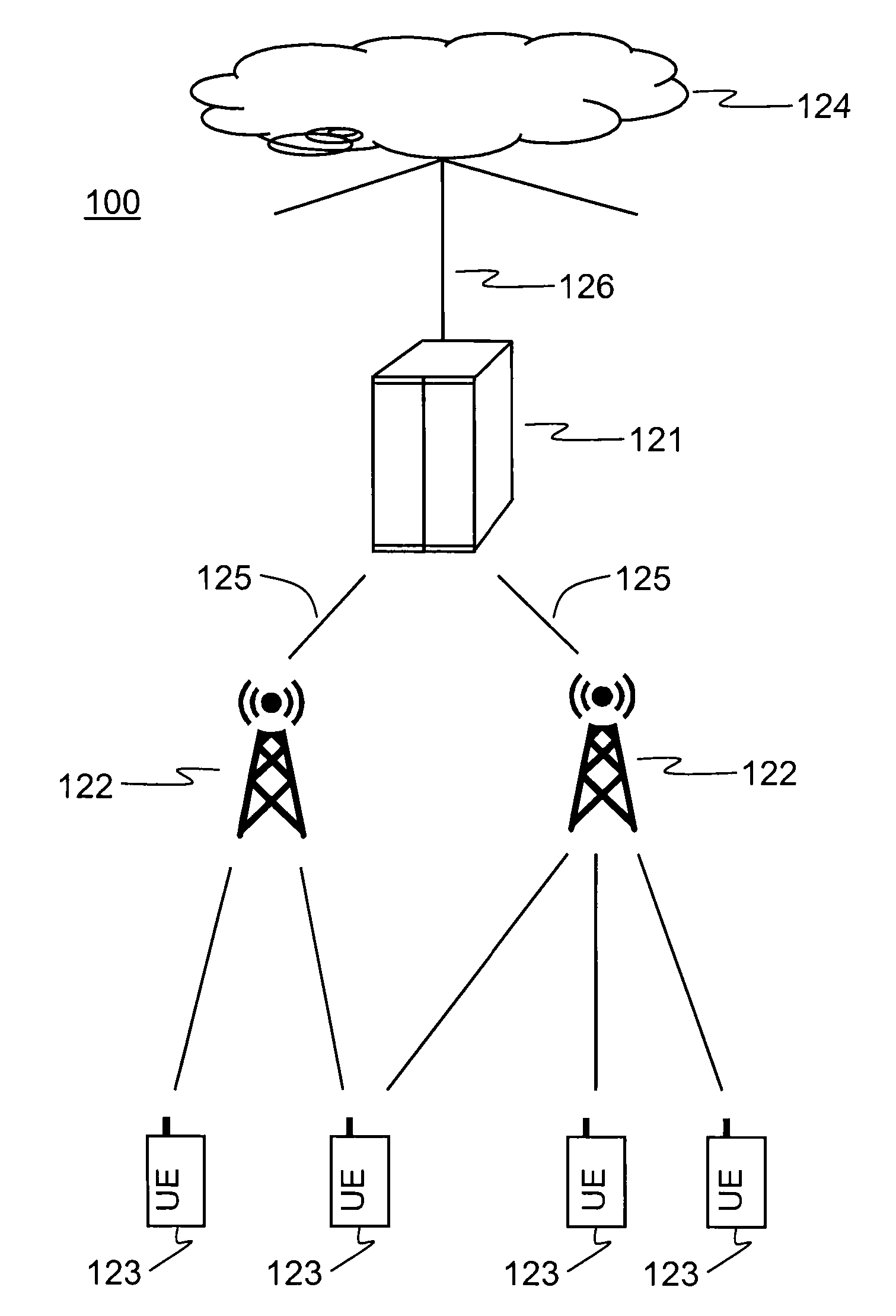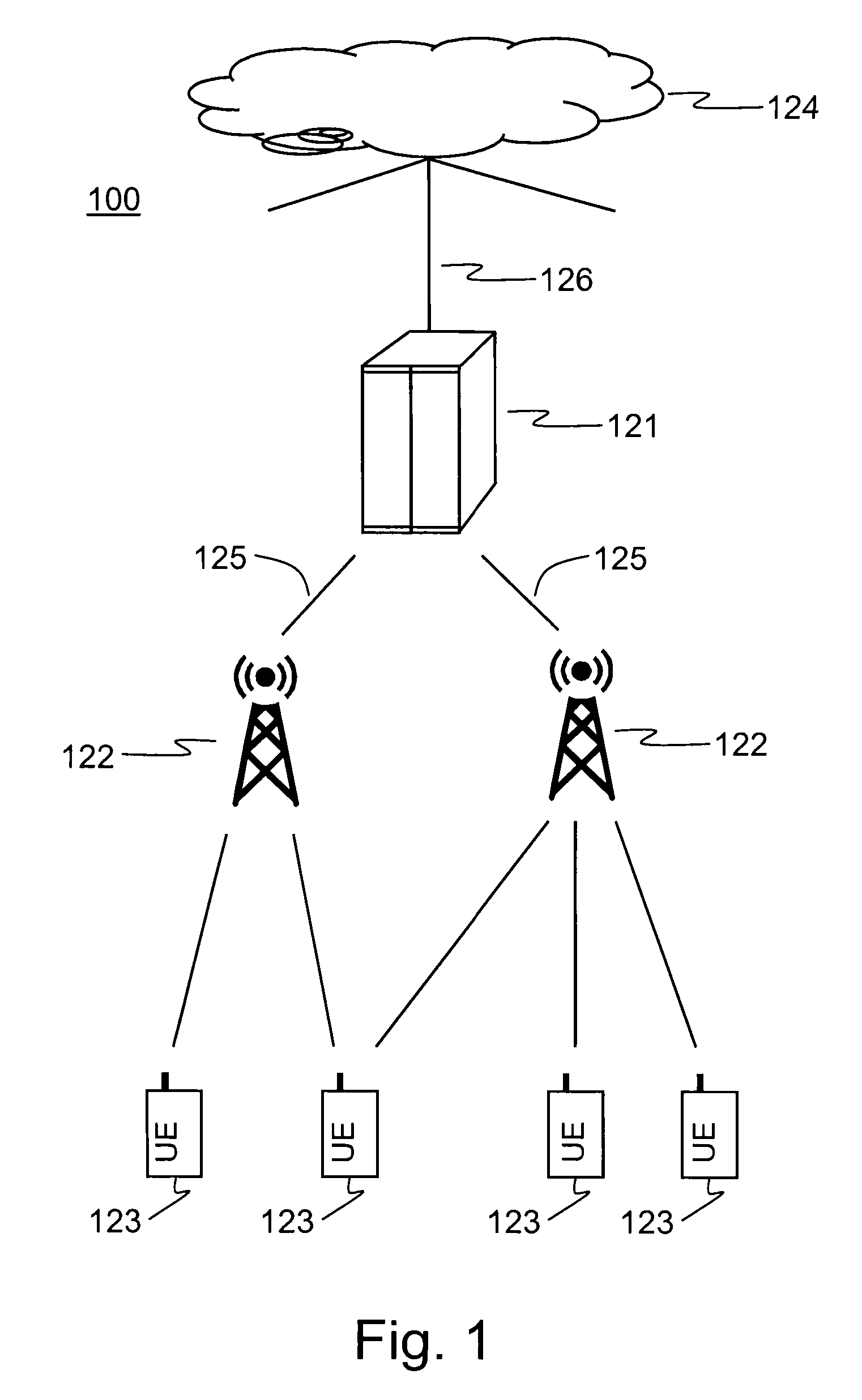Method and Arrangement in a Telecommunication System
a telecommunication system and method technology, applied in the field of methods and arrangements in cellular mobile communication systems, can solve the problems of limiting the number of users that can be efficiently supported, affecting the efficiency of user support, and limiting the number of users
- Summary
- Abstract
- Description
- Claims
- Application Information
AI Technical Summary
Benefits of technology
Problems solved by technology
Method used
Image
Examples
first embodiment
[0030]the present invention relates to a pseudo-random HARQ process selection. The transmitter unit of the user equipment maps a data packet onto a HARQ process using either a systematic or pseudo-random mapping method and avoids thereby transmission occasions with a fixed periodicity. The method selects a pseudo-random HARQ process within a given time span by adding a pseudo-random offset to the next available HARQ process number and derives thus the eventual HARQ process number that is used for transmission. The principle of this operation is illustrated in FIG. 6.
[0031]FIG. 9 illustrates a transmitter unit 91 in the user equipment 90 of a radio communication network whereby said transmitter unit 91 equipped for transmitting data packets 92a by a gated transmission scheme. Data packets 92a are mapped onto available HARQ-process numbers 92b by a mapping means 93, which is instructed by a randomizer 94 that randomizes the instances for transmitting said data packets 92a such as to a...
second embodiment
[0036]the present invention relates to a permutation of HARQ process transmission occasions. According to this alternative, the transmitter unit of the user equipment maps a data packet onto the next available HARQ process (without randomization in process number). A permutation method is used to randomize the transmission occasions of HARQ process numbers (while not randomizing the selection of the HARQ process), for example by pair-wise swap of two adjacent HARQ process transmission occasions within a larger time interval. This method may be beneficial in cases where stricter limitations to the selection of HARQ process are applicable that would prevent pseudo-random selection of HARQ processes, as for example for the case of multiplexing MAC flows with different priorities. A permutation rule can be preconfigured by higher layer signaling between the user equipment and the network. An example of a simple permutation rule is to shift the transmission occasion of each HARQ process ...
PUM
 Login to View More
Login to View More Abstract
Description
Claims
Application Information
 Login to View More
Login to View More - R&D
- Intellectual Property
- Life Sciences
- Materials
- Tech Scout
- Unparalleled Data Quality
- Higher Quality Content
- 60% Fewer Hallucinations
Browse by: Latest US Patents, China's latest patents, Technical Efficacy Thesaurus, Application Domain, Technology Topic, Popular Technical Reports.
© 2025 PatSnap. All rights reserved.Legal|Privacy policy|Modern Slavery Act Transparency Statement|Sitemap|About US| Contact US: help@patsnap.com



